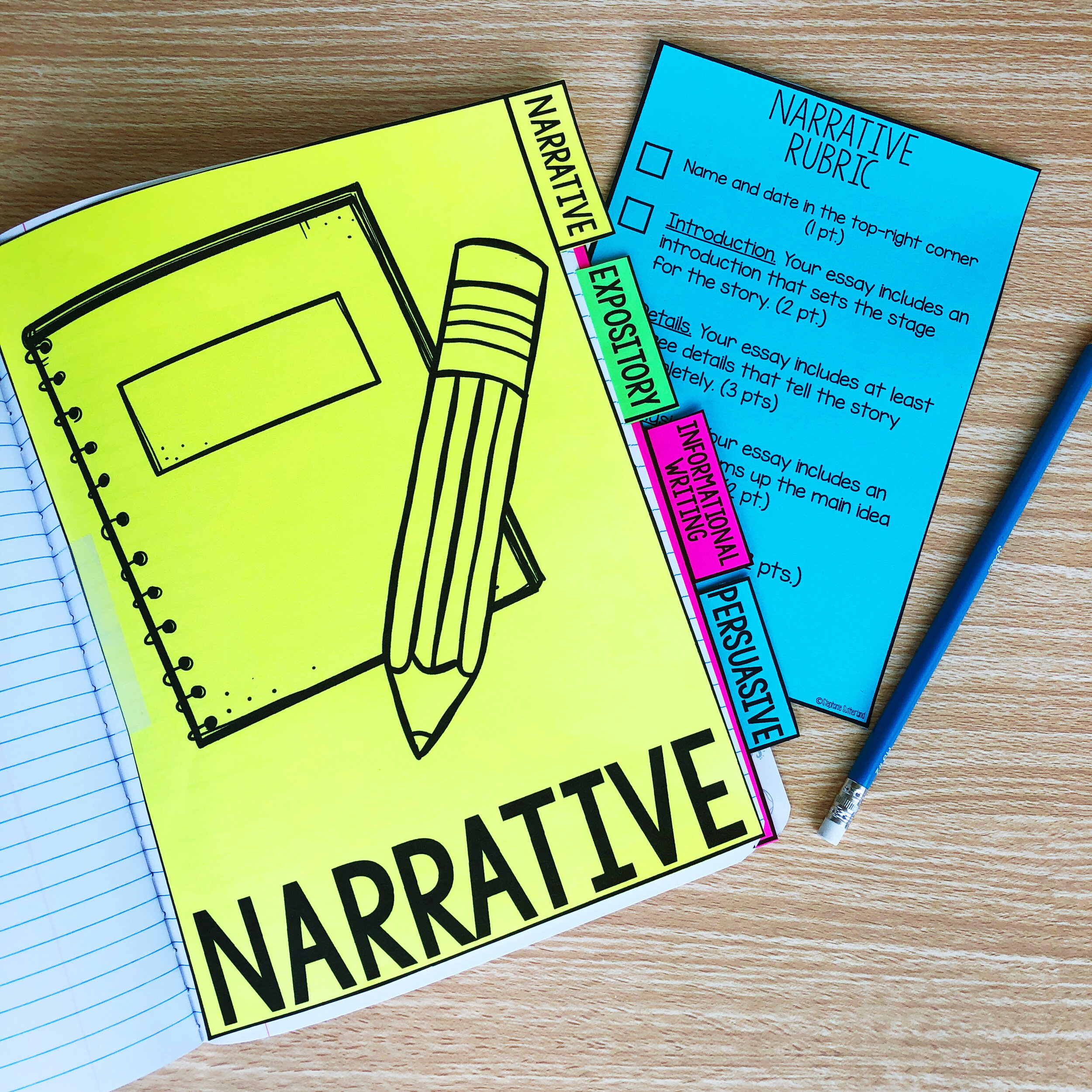Setting Writing Goals with Your Students
I recently shared a simple way to grade daily writing in student writing notebooks that you can keep up with and promote growth. One way that I believe you can more easily give written feedback to students is by staying tuned in to what their writing goals are.
Today, I want to talk to you about a back to school goal setting lesson that you can use with your students to help them clue in on what their writing goals are, and see more growth in your students as writers this year!
Do a Quick Write.
I’ve already written about the importance of Quick-Writes in depth in this blog post here, and I’ve written about organizing Quick Writes in the Writing Notebook Here.
For the purposes of goal setting, you will want the students to do a quick write that they can look at with a critical eye. You want to use writing that they can produce right then. If you’re doing this at the beginning of the year, you likely don’t have any writing samples to use anyways. But if you see this post in December and want to do some goal setting with your kids, I would have them do a fresh piece of writing rather than look back at some thing from a few weeks or months ago to choose to set goals off of.
Set a timer for 10-15 minutes. Give them a prompt. If you need Quick Write prompts for back to school season or any other season you can find some here.
Give Goal Options:
Give your students a list of writing goals that they can choose from. Just introduce these right now but don’t insist that everyone makes a choice right away. Most of your students, depending on their age, are not going to know where the writing strengths and weaknesses lie. Chances are good that no one has ever talk to about that before.
Some of my favorite options to give students are:
-using capitalization and punctuation every time
-Using my resources to help with my spelling
-expanding and using variety in my sentences
-increasing my writing stamina
-structuring my writing (using introductions, details, and conclusions)
Create a brief list of goals that is probably relevant to kids in your grade level, and present them. Give examples in mentor paragraphs or books of what this looks like in writing if you want an extra visual.
Have your students reflect on their writing.
Using the list of goals that you’ve created with your students, have them look back over their writing that they just produced and see if they notice anything that they may need to work on. I think it’s helpful if you list the writing goals in an order of foundational skill to more advanced skill.
So, if a student is not adding punctuation at the end of every sentence where it’s needed, they need to start there with their goal, rather than skipping ahead and setting a goal for sentence variety. You can explain this to students in the same way that they learn how to read or do math or do any other skill. You have to have the basics down before you can move on to more advanced things. Not having the basics down yet does not mean that they are not good writers! It just means that everybody develops the skills at a different pace. But it’s important that they have things like forming complete sentences, adding punctuation, thinking critically about their spelling etc. down before they move on to things like structure, length, organization, etc.
Confer and set the goal.
Have your students jot down their preferred goal on a sticky note. Pull them in individual writing conferences over the course of a few days. These conferences can be five minutes apiece, so you can fit a lot into one writing block.
In your conferences, read over the writing that the students produced, look at the goal that they set and determine if you think that’s the best fit for them. Most students will be spot-on with where they need to be. Some writers will be a little off the mark, so you will need to gently point out some of the things they overlooked in their writing, and explain that you’re going to focus on these skills first before setting the goal that they chose...but they will get there!
Once you have agreed upon their writing goal, jot it down on a new sticky note and stick it in the front or back cover of their writing notebook (wherever you have space!) This way, the kids always have access to it, and when you’re grading their notebooks each week, you don’t to pull out any special chart. The goals are just right there in each notebook. Plus, they’re private, which I think is important!
Provide weekly feedback based on their goal.
In this post here, I explain a simple notebook grading routine that gets your eyes on your students’ writing notebooks every week. In that weekly writing piece that you look at, take note of how they’re moving towards their writing goal. Is it time to switch goals to something more complex? Do they need a mini-lesson in a small group on that skill? How can you use their daily writing as a tool to promote them? Because, to be real with you, if they’re writing constantly and not getting any helpful feedback…why are they even doing it? No need to create a special assessment for a writing grade. Use the writing they’re already doing, without a ton of instruction in place, and use that as an example of where they’re at…and help them grow!
Check out my Writing Notebook on TPT, as well as other Writing Products!











